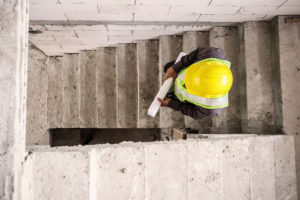
One of the conveniences of technology is the ability to accomplish things in a shorter amount of time than it would take to do the same task in an “analogue” fashion; email is faster than sending a piece of mail through the postal service. In many circumstances, the filing of construction notices and mechanics lien claims can be accomplished electronically, and the potential claimant can reap the benefits of the speedier e-recording transaction. This solution is not always available, however, and companies should still take precautions to make sure their rights are protected, and the filing is, in fact, accomplished.
State-Specific e-Filing
Some states, like Utah and Iowa, have mandated electronic noticing and filing systems, and others, like Pennsylvania, have decided to start using this type of system in the near future (for at least some specific notices). In this situation, many of the concerns that would otherwise accompany e-filing are not present. When state specific filing systems are in place, a claimant can rest assured that the e-filing platform is the correct place for the document to be filed. And, in some cases, the state-mandated platform can even be used to double check specific project and participant information to correct any potential deficiencies on the document to be filed.
There are still some things to consider when submitting a document through this type of e-filing platform, however. When, like in Utah, one can add notices to a certain already-existing project, or create a new project, there can be some confusion when certain details do not specifically match. What if the project looks the same, except for a switched address number, or a different GC is listed than the one that the claimant understands to be on the project? In situations like this, the answer likely comes down to how much the noticing party / claimant trusts their own data. If the data is strong, the claimant may feel better protected by filing a new project with what is believed to be the correct information. If the differing information is shaky, however, the claimant may be better protected by piggy-backing on the previously filed project information.
Commercial e-Filing Platforms
Commercial e-filing platforms, like Simplifile, are available to use for electronic filing in many counties, and in states with no state-specific centralized filing platform / repository. The benefits to e-filing mainly revolve around speed, and cost. When a document may be filed electronically, the turn around time to know if a document was accepted for filing (and the filing itself) or rejected for some reason is much faster. This can be of great significance if a party is running close to the deadline by which a notice or lien must be filed.
Recorders allow people to walk documents in to the office for filing, but many claimants are not local to the county in which the work was performed. In these cases, the choice is either sending the document to the appropriate office via mail / courier / delivery service, or submitting the document electronically. Clearly, submitting a document electronically will result in it being received by the recording office much quicker than sending it through the mail, and is cheaper than hiring a courier to walk the document in (if that is even an option).
There are limitations to this option, however. The largest obstacle is the availability of the service itself. While many, many counties accept e-filing for construction notice and lien documents, there are still significant holes in this ability. Notably, California only allows electronic recording of documents either with the court by attorneys, or in the property records by other specifically enumerated parties like title insurance companies.
Another potential tricky issue is what office in the county accepts e-filed documents. Just because a county accepts e-filing (sometimes even for the correct type of document), it doesn’t mean that the office in which the document is supposed to be filed does. For example, may offer electronic filing for the Register of Deeds, but mechanics liens specifically must be recorded in the Office of the Clerk of Superior Court, or other similar situations.
Over all, however, the ease and speed with which filing can be accomplished electronically, is a huge benefit to the construction notice and mechanics lien filing community. The ability to get closer to the applicable deadline is a welcome benefit, though filing prior to the last minute is generally better. As more and more counties accept e-filing, the process will continue to get easier and improve for parties looking to file important documents.